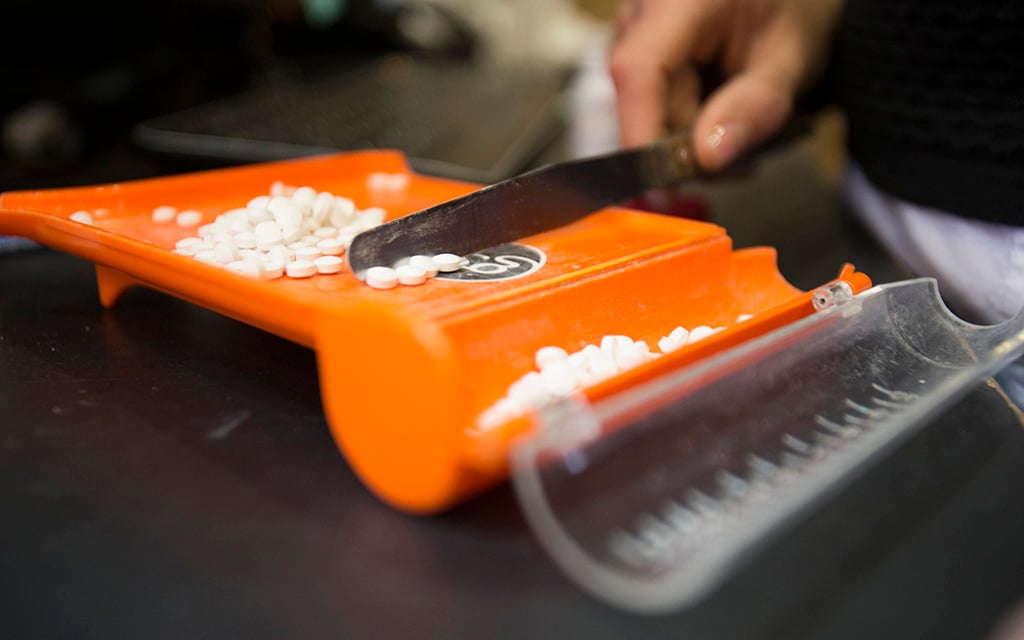
In 2022, 3,246 people died from opioid overdoses in the Arizona, according to the Arizona Department of Health Services. (File photo by Johanna Huckeba/Cronkite News)
LOS ANGELES – The opioid epidemic has touched all races, but when it comes to seeking treatment, some minority groups are at a distinct disadvantage, a panel of experts said at a recent online forum.
Addicts who want to kick their habit in predominantly white communities have more access to take-home treatments while those who live in heavily minority communities usually must rely on clinics, making it harder to recover.
In particular, studies show that white people usually can more readily access medications like buprenorphine, a take-home treatment plan, while racial minorities are left to seek treatment in methadone clinics.
Both drugs aid addicts in trying to reduce their dependence on opioids like heroin or synthetics like fentanyl.
“Access to these two medications is really racially segregated so that neighborhoods with a higher proportion of Black and Hispanic residents have more access to methadone but lower access to buprenorphine whereas neighborhoods with a higher proportion of white residents have more access to buprenorphine,” said Magdalena Cerdá, professor in the division of epidemiology at NYU Grossman School of Medicine’s Department of Population Health. “There’s real racial inequity.”
She spoke as part of a Jan. 31 panel sponsored by the Center for Health Journalism at the University of Southern California.
With “buprenorphine, you can get a prescription from your doctor and you can consume it at your home at your leisure,” Cerdá said. With “methadone, you have to go into the clinic, especially at the beginning, often every day and it is a highly punitive setting where you consume these medications.”
With synthetic opioids like fentanyl-laced drugs flooding illegal markets, authorities are focusing on what they call “harm reduction,” which involves putting an emphasis on access to medication and treatment to prevent fatal overdoses and cure addiction. That’s why issues of access to methadone and buprenorphine become so important.
Danielle Russell, an Arizona State University doctoral student in justice studies, participated with University of Arizona researchers and others in looking at whether Arizonans had access to methadone and buprenorphine during the COVID-19 pandemic. They discovered that not a single participant in the study received the federally allowed 14- or 28-day methadone take-home doses. All participants felt that daily clinic visits disturbed their day, exposed them to the virus and considered them unfair to require during a pandemic, according to the study published last October.
A study published in the medical journal JAMA Psychiatry in 2019 found that buprenorphine treatment is “concentrated among white persons and those with private insurance or use self-pay.” Another study, one done in 2017 by Case Western Reserve University and two university hospitals, showed that more than half the physicians in Ohio who prescribe buprenorphine only accepted cash, creating an additional barrier in low-income communities.
The NYU Grossman School of Medicine studied community access to preventive medicine. It found 87% of people with opioid-use disorder do not receive medication. The study proved that states that have expanded their Medicaid policies have not only experienced an increase in access to treatment but have seen a decline in heroin and synthetic opioid overdoses.
Arizona had 3,246 non-fatal opioid overdoses last year and 1,631 deaths, the Arizona Department of Health Services reports.
During the COVID-19 pandemic, overdoses rose. In 2020, 68,630 died from opioid overdoses in the United States, according to the National Institute on Drug Abuse.
Scott Higham, a Washington Post reporter who has covered the opioid epidemic and written a book about it, said fentanyl now dominates synthetic opioid production.
“Fentanyl is the most profitable drug in the black market,” Higham said during the USC forum. “Fentanyl can be very cheap. you can make it in your bathtub at home.”



